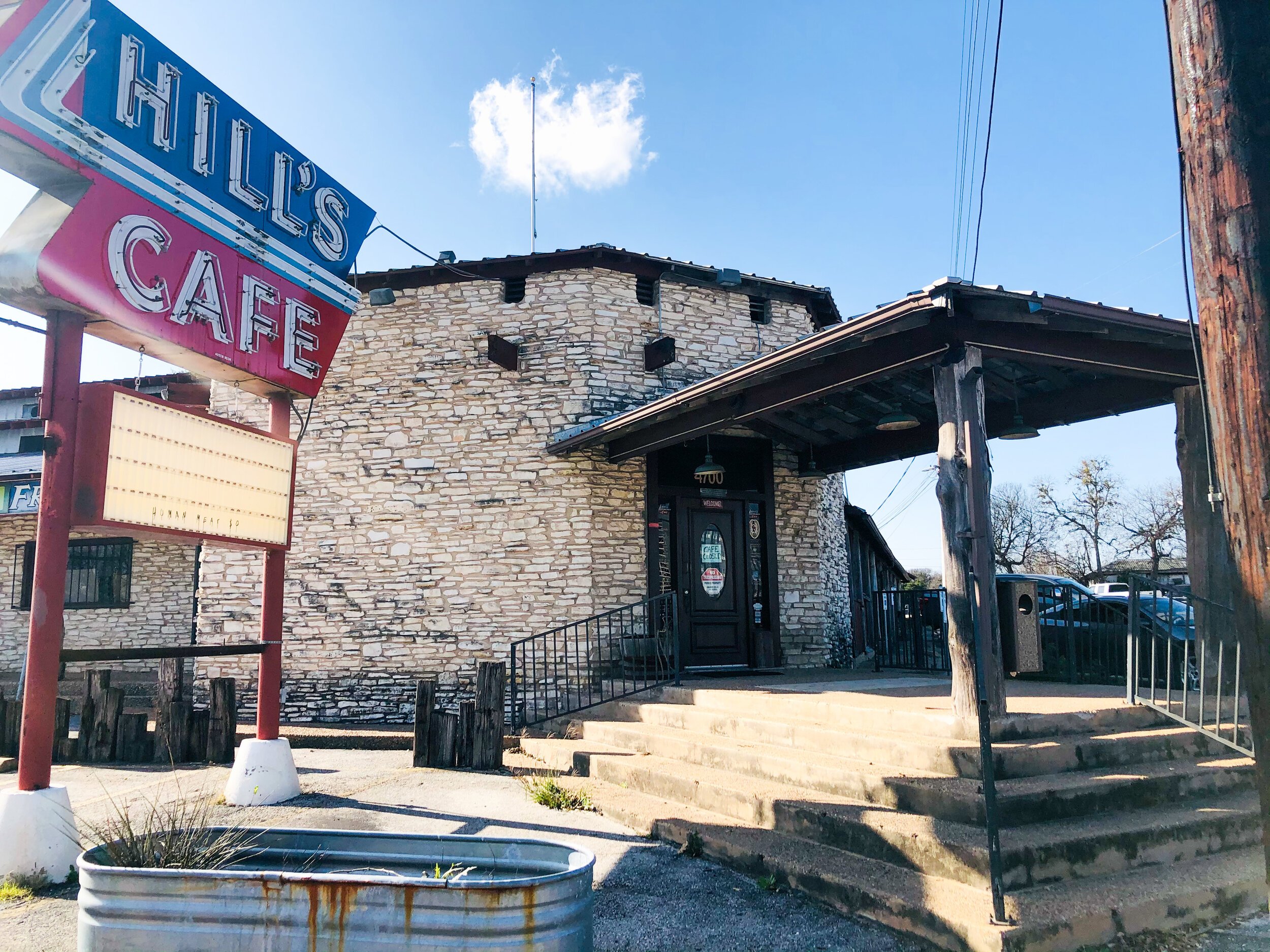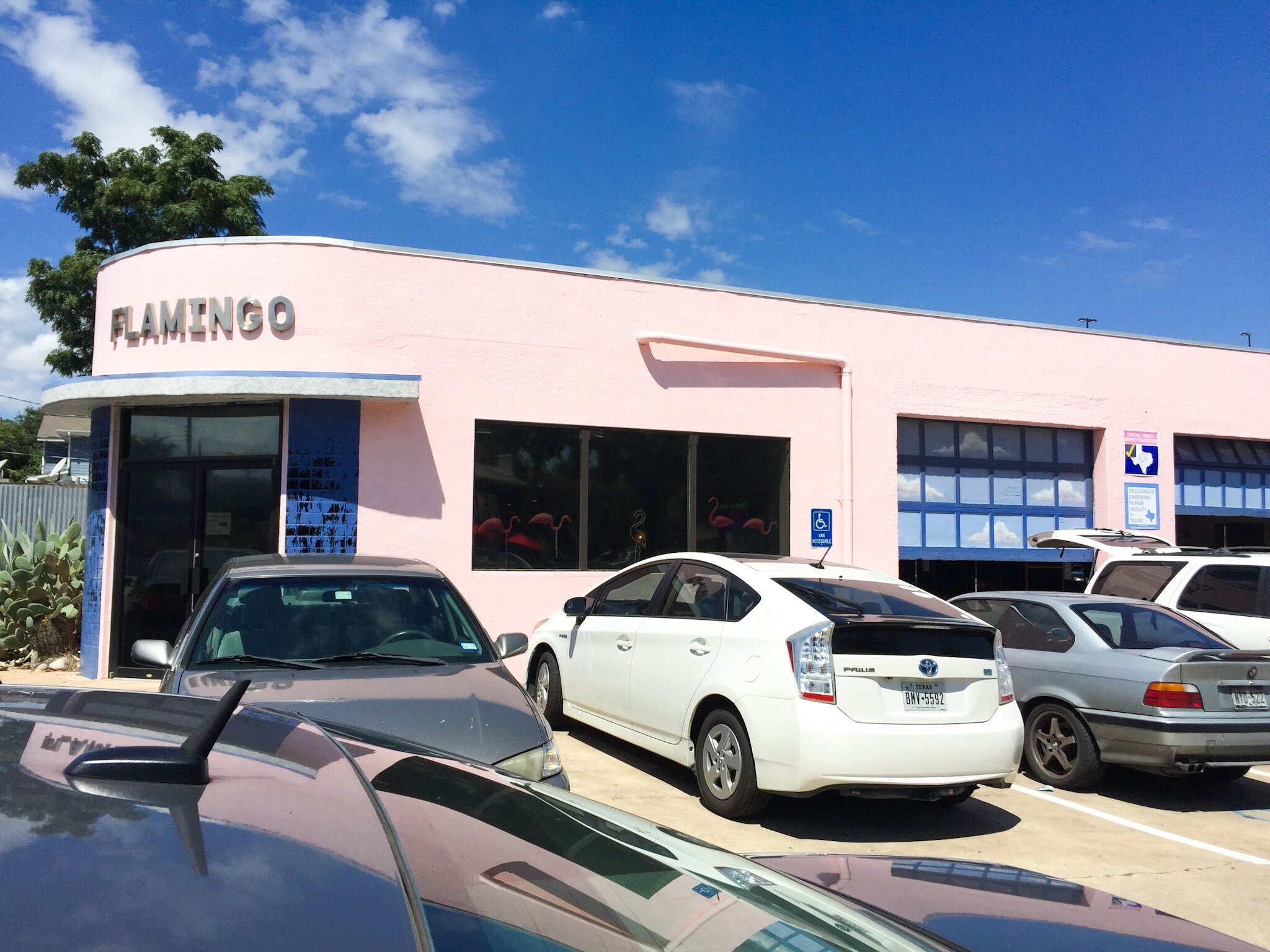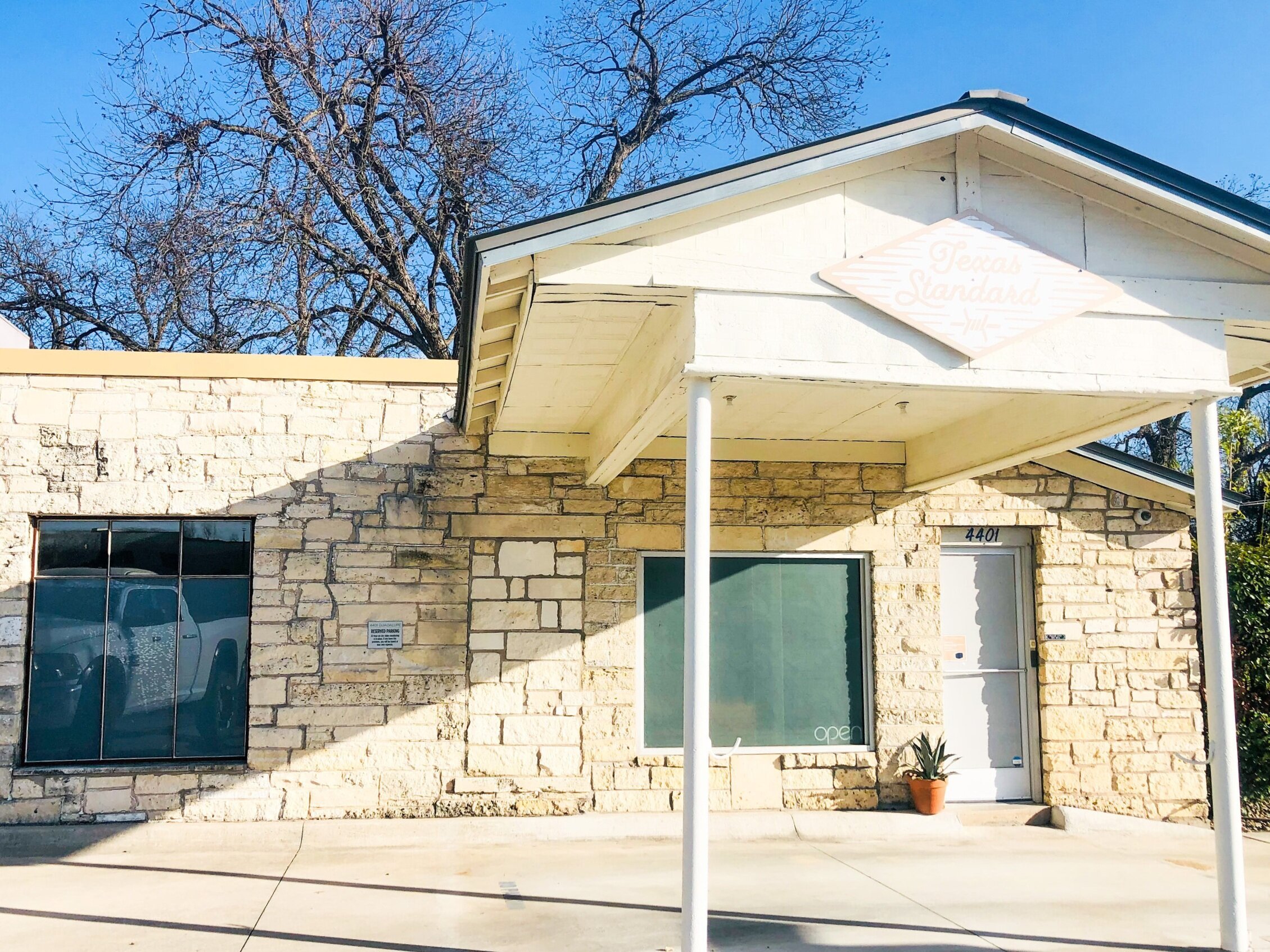The Meridian Highway
BY REBEKAH DOBRASKO
Hill’s Café: 4700 South Congress Avenue. Charles Goodnight opened Hill’s Café in 1947 to serve patrons at the adjacent Goodnight Motel. The café began as a small coffee shop and restaurant named after Goodnight’s business partner, Sam Hill.
Long before our travel woes on Interstate 35 and Mopac, long before Austin’s development into a tech and live music mecca, the capital of Texas was just another stop along the Meridian Highway. Stretching from Winnipeg, Canada to Monterrey, Mexico, the Meridian Highway presaged the construction of I-35 and our modern highway system. In the early twentieth century, Texas’ roads were often impassable due to weather or poor construction. A movement first spearheaded by bicyclists, known as the Good Roads movement, led to the formation of national groups dedicated to improving roads across the United States. Ultimately, the federal government stepped in to provide funding, and the Texas Highway Department (THD) came into being in 1917 to tap those federal dollars.
The Meridian Highway, however, predates the formation of the THD. In 1911, Kansan John Nicholson decided the nation needed a good north-south highway. Other national highways, such as the Lincoln Highway, the Bankhead Highway, and the Old Spanish Trail, reached from coast to coast, but none stretched from Canada to Mexico. Nicholson aimed to change that, and founded the Meridian Road Association in Salinas, Kansas. Over time, the Association routed the highway along the Sixth Principal Meridian, thus giving the road its name. The Meridian Highway entered Texas from Oklahoma near the town of Bowie, and then headed south through Fort Worth, Waco, Austin, and San Antonio to Laredo. Ultimately, the Meridian Highway was absorbed into the development of Interstate Highway 35.
In recent years, the Texas Legislature tasked the Texas Department of Transportation (TxDOT) and the Texas Historical Commission (THC) with identifying, designating, interpreting, and marketing historic roads and highways in Texas. The first project under this program surveyed routes and sites along the Bankhead Highway. THC recently completed survey work along the Meridian Highway, the second project in the program. Although no remnants of the original road itself remain in Austin, there are small pockets of roadside businesses that still tell the story of the Meridian Highway through our city.
Goodnight Motel: 4702 South Congress Avenue. Opened in 1941 to catch the tourist trade between Austin and San Antonio, the Goodnight family ran this motor court-style resting place for decades. Now known as the Classic Inn, the individual buildings of the motor court and the mid-century modern office building still welcome weary travellers
The Meridian Highway entered Austin from the north along what is now North Lamar Avenue and crossed east to Guadalupe Street into motel styles more typical of today. Some motels along the Meridian Highway in Austin include the Blue Bonnet Court (1929, 4407 Guadalupe Street), the Austin Motel “Tourist Court” (c. 1940, 1220 S. Congress Avenue), the St. Elmo-Tel (1940, 4501 S. Congress Avenue, now demolished), and the Goodnight Courts/Classic Inn (c. 1941, 4702 S. Congress Avenue). Restaurants served both locals and travelers, and some have become Austin institutions, such as El Patio (1954, 2938 Guadalupe Street), Martin’s Drive-In (1926, 2808 Guadalupe Street), and Hill’s Café (1941, 4700 S. Congress Avenue).
Gas stations usually followed architectural designs prescribed by the parent oil company, making them instantly recognizable in form. Travelers along the Meridian could also at The Triangle. Travelers had a choice to stay on Guadalupe Street until its intersection with West First Street (now West Cesar Chavez Street) and head east to Congress Avenue, or to head east on Nineteenth Street (now Martin Luther King, Jr. Boulevard) and then turn south on Congress Avenue and go through Capitol Square. The Meridian Highway then followed South Congress Avenue out of town toward Buda and San Marcos.
James Hershel Service Station: 3512 Guadalupe Street. Now Flamingo Automotive Repair, this service station opened in the late 1930s with a distinctive Art Deco architectural style. The canopy over the gas pumps and the service bays are still visible on the building.
As roads improved across the state and more people began to own cars, travel and car-related businesses began springing up along highways and at important intersections. Tucked away among new condominiums, restaurants, and other recent development are gas stations, auto repair shops, motels, restaurants, and tourist courts that continue to tell a story about early travel and tourism through Austin. The route of the Meridian down Congress brought travelers to the state capitol, as well as down one of Austin’s main business streets, demonstrating the importance of cultural and historic sites to the routing of these early highways.
Motels and restaurants catered to travelers along the Meridian Highway, while gas stations and auto repair shops catered to the travelers’ vehicles. Early motels typically took the form of motor courts, with an office out front and individual buildings accommodating travelers needing a bed. As demand rose, these tourist courts morphed stop at independent gas stations, such as the J.L. Teague Filling Station at 4401 Guadalupe Street. Opened in the 1930s, this station served Hyde Park locals as well as visitors headed into town. One of the more well-known gas stations on the Meridian Highway is the Gulf station at 6416 North Lamar Street. Kenneth Threadgill opened this station in 1933 and served beer to thirsty travelers. Eventually, Threadgill’s gas station became a beer joint and attracted local musicians to entertain bar customers. Further south, the Hershel James Filling Station (3512 Guadalupe Street) provided gas beginning in the 1930s, and partnered with the Stiles Tire Company in the 1950s. The building continues to house an automotive-related business.
J.L. Teague Filling Station: 4401 Guadalupe Street. First opened along the Meridian Highway c. 1930, this gas station was independent from the larger oil companies. The station served Hyde Park and travelers along the highway through the 1960s.
Austin’s early tourism and travel heritage can still be found along its streets, if one knows where to look. While many of these sites are vulnerable to development, others continue to serve automobiles and visitors as they have done for close to eighty years.
THIS ARTICLE WAS WRITTEN FOR PRESERVATION AUSTIN’S WINTER 2017 NEWSLETTER. READ OUR COMPLETE NEWSLETTER ARCHIVE HERE.




